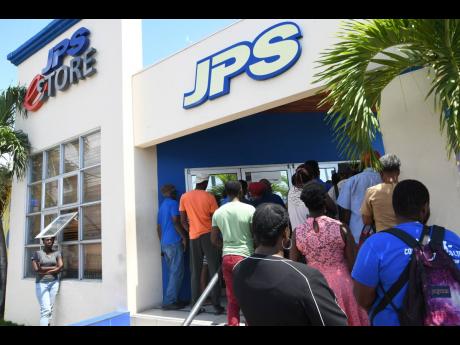JPS outage tracking system vulnerable to cyberattacks
The Jamaica Public Service Company system used to track power outages is vulnerable to cyberattacks, and needs to be upgraded, the power utility said in its annual filing for a tariff review of electricity rates. It’s one of several items on the...
The Jamaica Public Service Company system used to track power outages is vulnerable to cyberattacks, and needs to be upgraded, the power utility said in its annual filing for a tariff review of electricity rates.
It’s one of several items on the JPS’s to-do list to improve performance for its customers.
The outage management system, or OMS, allows the utility to pinpoint outages along the national electricity grid, which it operates under exclusive licence from the Jamaican government, and to identify and isolate damaged transformers, power lines and other equipment. It detects outages through its own system, but also in conjunction with call-ins from customers.
JPS said in its tariff review filing to regulator Office of Utilities Regulation, OUR, that the current system commissioned in 2013 has reached the end of its “useful life” – both in terms of the hardware and software.
“This poses serious cybersecurity risks as well as maintenance risks due to the likelihood of system failure. The current OMS also has limited integration with other critical operational and enterprise systems,” the company added in the OUR filing.
The utility wants the OMS system to interact with its other control systems and meter data system on a “common platform”, which would align with international best practices.
“The new OMS will allow JPS to integrate all of our individual smart-grid initiatives geared for the outage management process,” the power utility said.
It provided no indication of the expected cost of the upgrade and system integration, but said it plans to commence the project in 2022. JPS is yet to respond to requests for comment on why it has deemed its system vulnerable to attacks.
Worldwide, hacks and ransomware attacks are on the rise, and are increasingly being seen as a national security threat, especially when targeted at energy and other infrastructure and utilities. The economic disruption that ransomware attacks can cause was most recently demonstrated when cybercriminals took control of the Colonial Pipeline Company systems, resulting in a shutdown of pipelines that feed gasolene to a large swathe of Americans.
JPS recorded 56,405 forced outages in 2020, which reflected an improvement over the five-year average of some 63,020, according to the tariff document.
“Equipment failure, unknowns and vegetation were the main outage drivers for 2020,” it said, adding that the equipment failure was largely due to the impact of three big tropical storms: Laura, Zeta and Eta.
The COVID-19 pandemic has affected electricity consumption habits, with more persons working from home, but JPS continued to invest in most of its planned projects during the financial year. Revenue shrank in the two quarters after the coronavirus was detected in Jamaica, but recovered in the fourth quarter. For the full year, the utility grew revenue overall in 2020, but just barely, from US$881 million to US$883 million.
“The COVID-19 pandemic represents not just a global health crisis, but has changed the way in which we operate as a utility. However, despite the challenges experienced by JPS due to various COVID-19 protocols and restrictions on movement, which in many instances curtailed planned work activities, JPS has been tactical in implementing all but one project, which was deferred to 2021 due to COVID-19 impact on supply chains,” the power utility said.
Last month, JPS Chief Financial Officer Vernon Douglas told the Financial Gleaner that the company would invest approximately US$100 million annually in capital expenditure over the period 2019 to 2023, per its five-year investment plan.
In terms of improving its reliability alone, JPS plans to spend US$15.8 million this year, according to the tariff filings, which will be split US$3.2 million on voltage standardisation; US$2.3 million on grid modernisation; US$4.6 million on improving the structural integrity of the distribution; US$2.1 million on reconditioning and relocation of distribution lines; US$1.9 million on improving the structural integrity of the transmission; and US$1.7 million on improving the integrity of substations.
Comparatively, in 2020 the company spent US$59.7 million on improving reliability.

